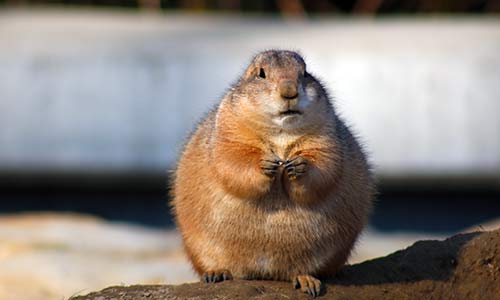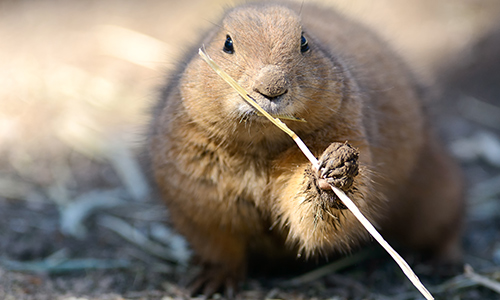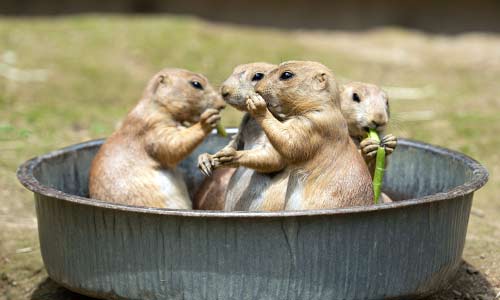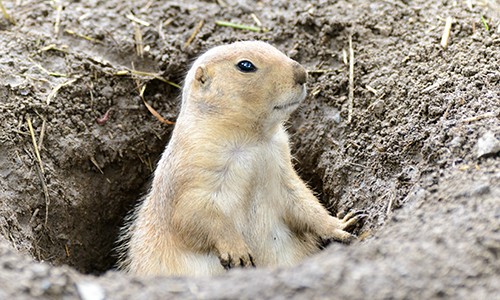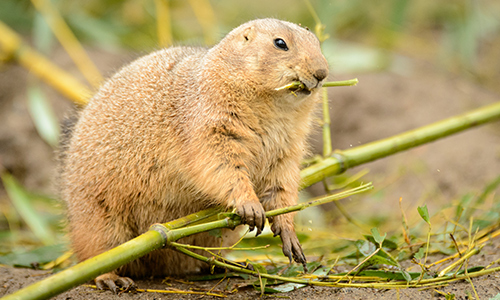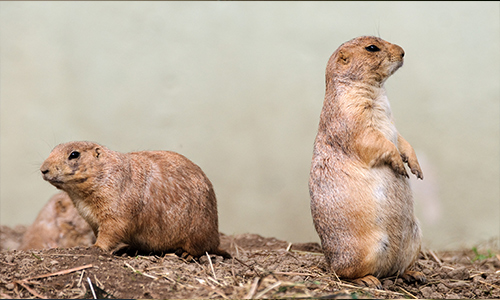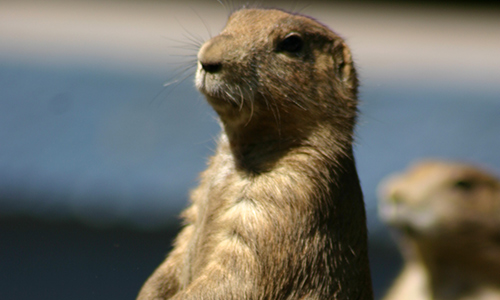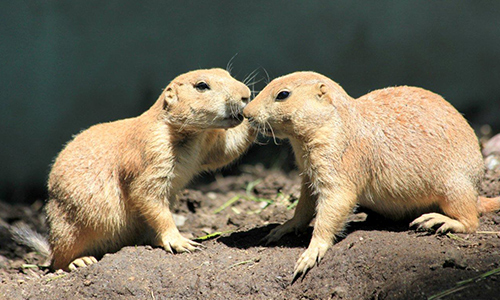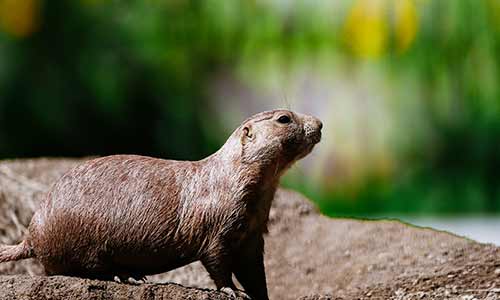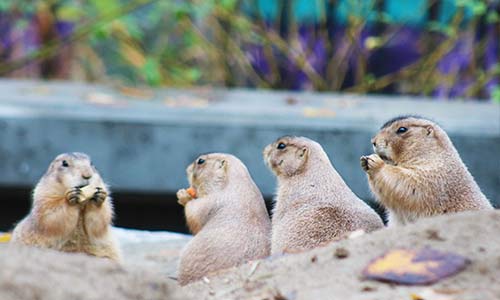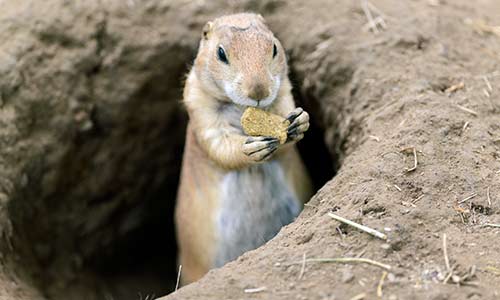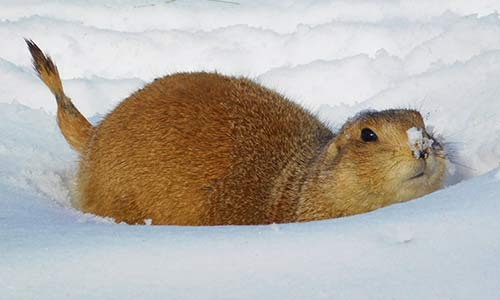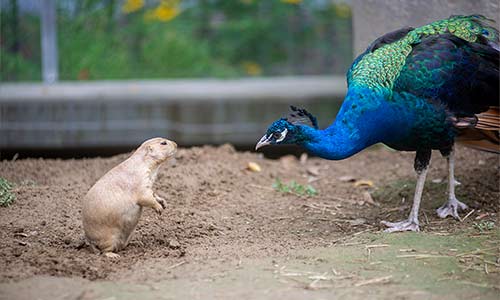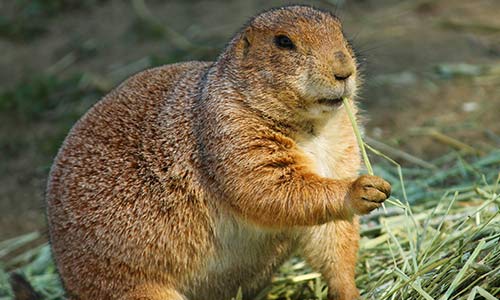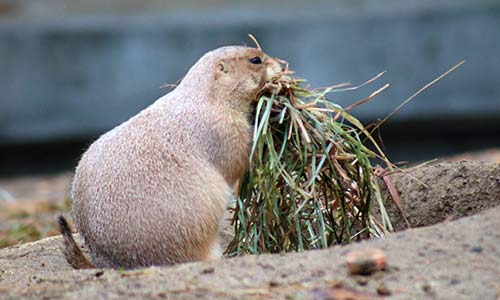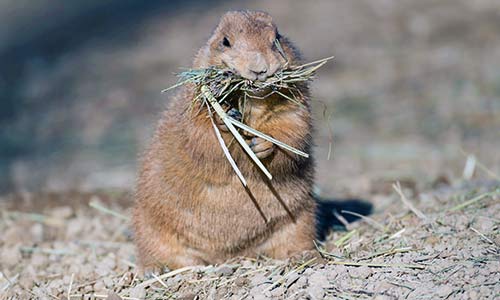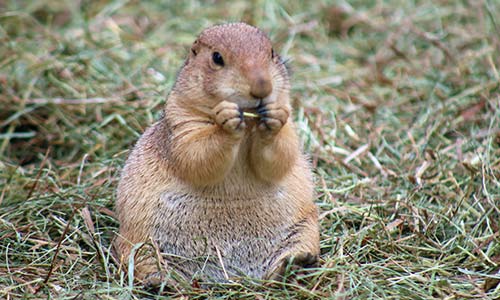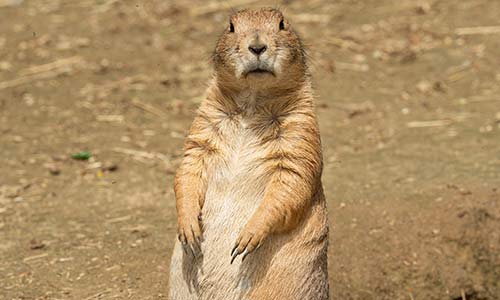Black-Tailed Prairie Dog
Cynomys ludovicianus
About the Black-Tailed Prairie Dog

Geographic Range:
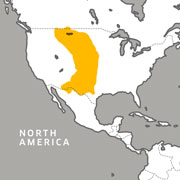
Class: Mammalia
Order: Rodentia
Family: Sciuridae
Genus: Cynomys
Species: ludovicianus
The black-tailed prairie dog is a small, stout rodent with a short black tail for which it is named. It has long claws for digging tunnels, as prairie dogs create and live in large and complicated underground burrow systems. Prairie dogs are also known as “range rodents” and “sod poodles.”
Black-Tailed Prairie Dog Facts
Appearance:
Black-tailed prairie dogs are small, stout, tan rodents (not dogs!) with a light-white or buff-white belly. They get their names from their short, black tail tips (other names include “range rodents” and “sod poodles”). They have small ears and dark eyes. Prairie dogs have long claws for digging tunnels and sharp incisors for clipping grass.
Size:
Adults are typically 1 to 3 pounds, with an average length of 14 to 17 inches.
Diet:
Prairie dogs have a diet composed primarily of vegetation—grasses, flowering plants and occasionally insects such as grasshoppers or beetles. They need very little to no water, most of which is acquired from plants they eat.
Reproduction:
Females produce one litter of approximately four to five pups per year in March or April. Gestation lasts about 28 to 35 days. Pups are born blind and hairless, and they don’t make an appearance outside of the burrow until they’re about 6 weeks old.
Behavior:
Strictly diurnal, though most active in mornings and evenings, prairie dogs generally sleep in the sun in the middle of hot days and are more active when it’s cool or cloudy. Prairie dog groups are called “towns” or “colonies.” Colonies are further subdivided into territorial neighborhoods called “wards,” which are comprised of “coteries.” Coteries are family groups made of one male, one to four females, and offspring under 2 years of age.
While others are out and about, at least one prairie dog will act as “look-out,” standing on a mound and watching for predators, and calling to warn others back into the tunnels with shrill bark-like whistles if one is spotted. When danger has passed, the prairie dog will sound an "all-clear" call for the group to hear. They use vocal communication, having many different sounds for different messages. Coterie (family) members greet each other with what looks like a kiss, touching bared teeth together to recognize each other.
Black-tailed prairie dogs don’t hibernate (only in extremely cold temperatures), unlike most other species of prairie dog.
Habitat/Range:
Black-tailed prairie dogs are found in short-grass prairie habitats of western North America. They form complex, widespread underground burrow systems, avoiding areas of heavy brush or tall grass due to reduced visibility.
Role in Their Habitat:
Many animals feed on prairie dogs, and both predator and prey animals will use old prairie dog tunnels for their own homes. Black-footed ferrets, for example, can’t dig tunnels for themselves, and they use prairie dog burrows instead for shelter; prairie dogs are also their primary food source.
Life Expectancy:
From 3 to 8 years.
Conservation:
Prairie dogs used to number in the hundreds of millions, but they were wiped out in droves by loss of habitat, poisons and plague. They’re now making a powerful comeback, but they’re still at risk from loss of habitat.
Fun Fact
- Black-tailed prairie dogs are one of two species described in journals from the Lewis and Clark expedition.
- It's believed they got their name from settlers traveling across the plains who thought the prairie dog's "bark" was similar to the domesticated dog's.
You Can Find This Animal in the Children's Zoo
Zoodopt a Prairie Dog!
Zoodopts support the care and feeding of our animals, and with each purchase, we'll bring a little of the Zoo to you! Zoodopt today!
Home sweet home
Prairie dogs don't just aimlessly dig holes--they've got it all planned out. Their underground burrows have defined nurseries, sleeping areas and even bathrooms!
You May Also Like
At Franklin Park Zoo:
At Stone Zoo:

